Picking the Perfect Hydrangea: A No-Nonsense Guide for Real Gardens
I’ve been knee-deep in dirt and plants for more than two decades, and I’ve seen garden fads come and go. But hydrangeas? They’re forever. Everyone always asks for them. My most important lesson about them, though, didn’t come from a book—it came from a big, leafy mistake.
In this article
Early in my career, I planted this stunning blue mophead hydrangea for a client dreaming of that classic, coastal vibe. The next summer… nothing but leaves. Zero flowers. I had pruned it in the spring, just like almost every other shrub I knew. That was a tough lesson: not all hydrangeas play by the same rules. Real success isn’t about grabbing the prettiest pot at the garden center. It’s about knowing the plant and picking the right one for your yard, your climate, and your willingness to fuss over it (or not!).
Choosing a hydrangea is a serious commitment. A happy shrub can stick around for 50 years or more, becoming the star of your landscape. A bad choice, on the other hand, means years of frustration and wondering why you never get any flowers. This guide is built on all those years of experience—the successes, the failures, and all the questions I’ve answered for homeowners. We’re going to dig into the five main types you’ll find, how they work, and how to choose one that will actually make you happy.
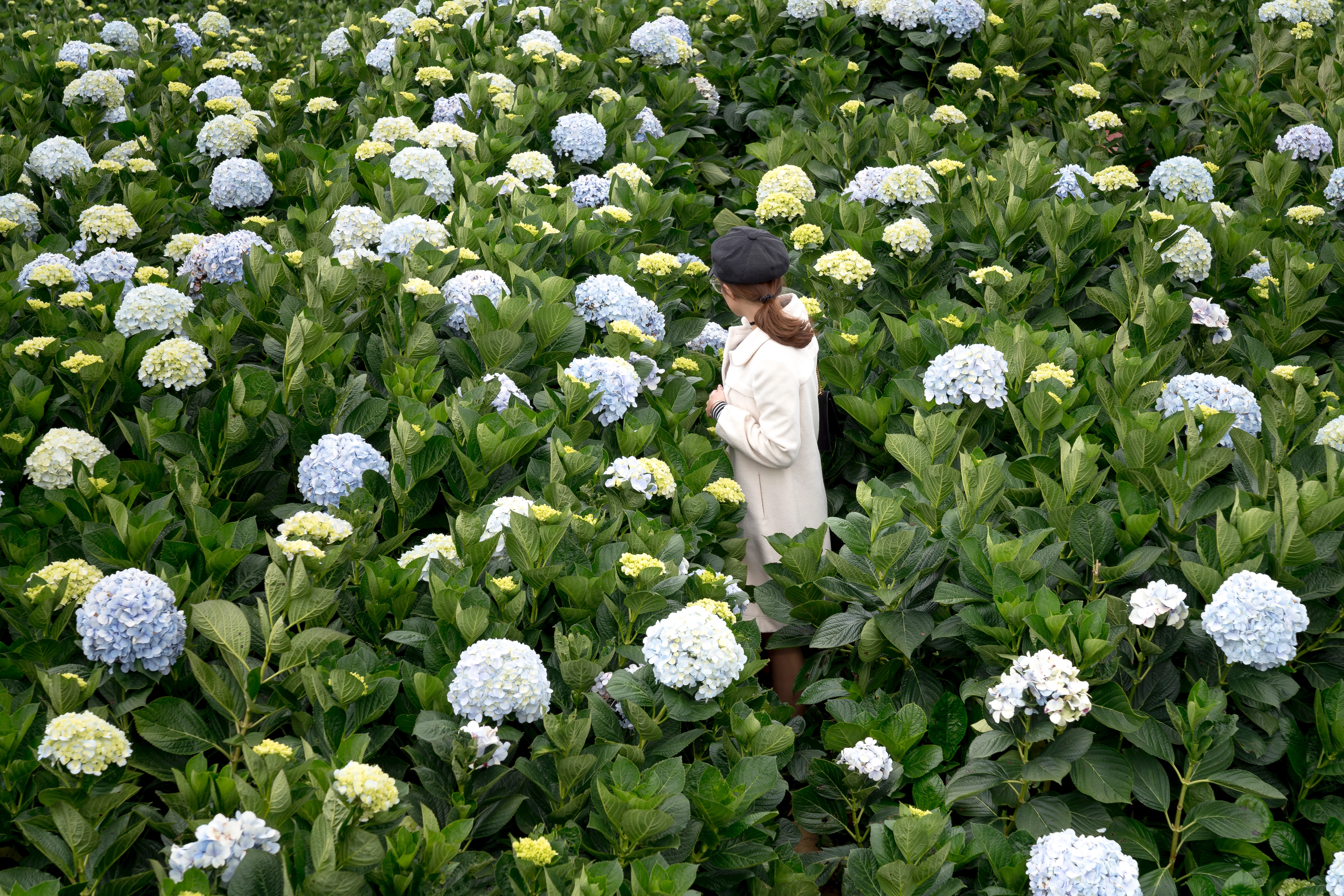
The First Thing to Know: Old Wood vs. New Wood
Before we get into the pretty flowers, we have to talk about the single most important hydrangea concept: does it bloom on old wood or new wood? Honestly, if you get this one thing right, you’re 80% of the way there. It dictates everything about when and how you prune. Getting it wrong is the #1 reason people have flowerless hydrangeas.
Blooming on Old Wood: These plants are the planners. They form their flower buds for next year’s show during the late summer and fall. Those tiny, precious buds hang out on the woody stems all winter long. Bigleaf, Oakleaf, Mountain, and Climbing hydrangeas are all in this club. So, if you prune these guys in the fall or spring, you’re literally snipping off next year’s flowers. A late spring frost can also zap the buds, which is a huge problem in colder areas.
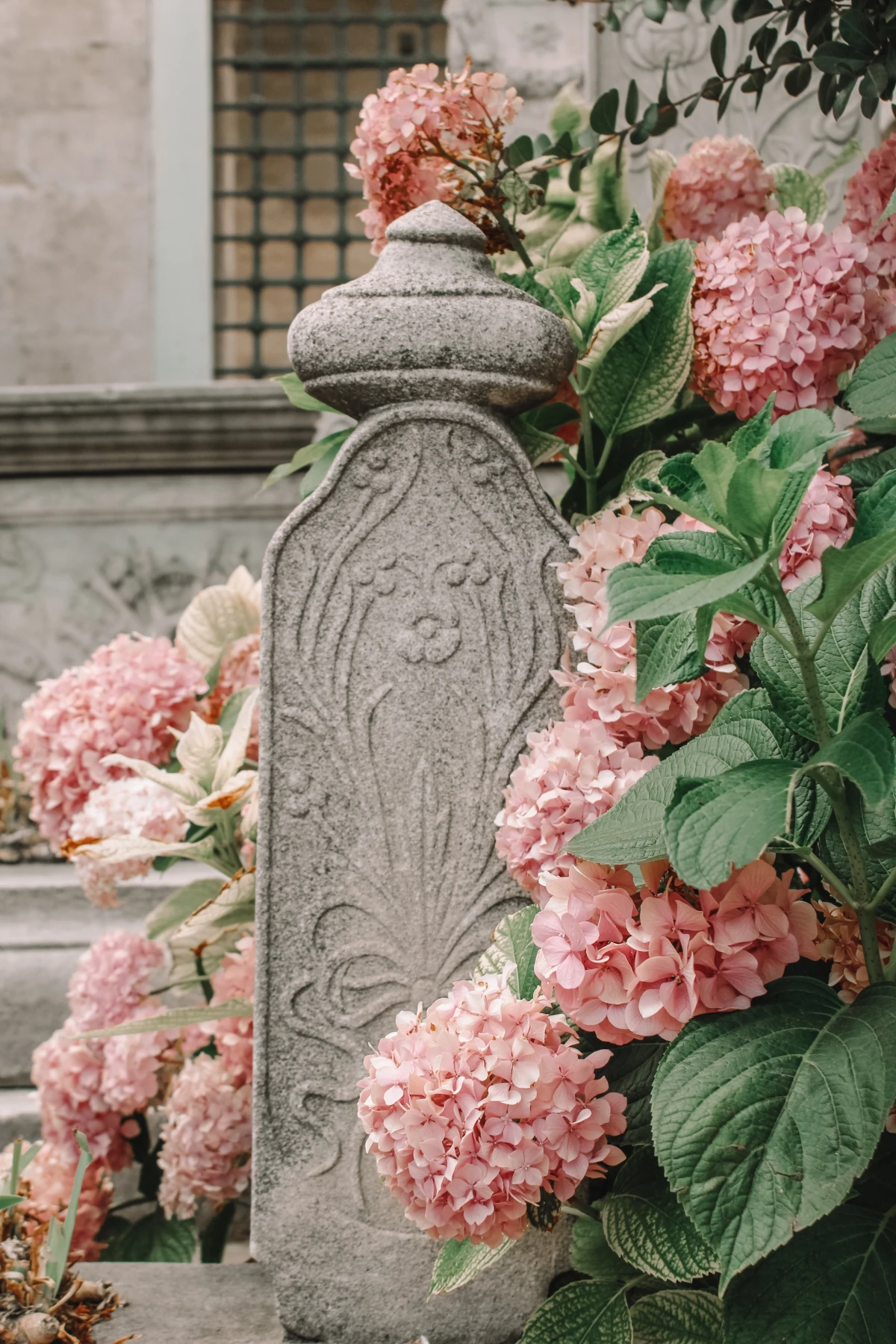
Blooming on New Wood: These are the spontaneous types. They create their flower buds on the fresh green growth that shoots up in the current spring. Panicle and Smooth hydrangeas work this way, which makes them incredibly reliable, especially if your winters are brutal. The buds aren’t formed until long after the frost danger has passed. You can prune these shrubs from late fall all the way through early spring without a single worry about losing that season’s flowers.
The Magic of Changing Colors (It’s Just Science)
Everyone gets excited about turning their hydrangeas from pink to blue. It’s not some garden center gimmick; it’s pure soil chemistry. This trick primarily works for Bigleaf and Mountain hydrangeas.
The secret is aluminum. The flower color depends on whether the plant can absorb the aluminum that’s naturally in the soil.
- For those gorgeous blue flowers, the plant needs to absorb aluminum. For that to happen, the soil has to be acidic (a pH of 6.0 or lower). You can help this along with a soil acidifier, which is usually just aluminum sulfate. You can grab a bag for about $10-$15 at any garden center. Quick tip: A soil test first can save you some guesswork. You can buy a simple probe kit for under $20 or send a soil sample to your local university extension service for a super-detailed report.
- For vibrant pink or red flowers, you need to block the plant from absorbing aluminum. This happens in alkaline soil (a pH of 7.0 or higher). To raise your soil’s pH, you can add garden lime.
Heads up! This color-change trick is a marathon, not a sprint. It can take a full season or two to see results. A common mistake is dumping a ton of product on the plant in June and expecting blue flowers in July—that’ll just burn the roots. A good rule of thumb is to scatter about a quarter-cup for a small-to-medium shrub around the drip line (the area under the furthest leaves) in both spring and fall. And remember, white hydrangeas will always be white. Their color is genetic, so no amount of soil tinkering will change them.
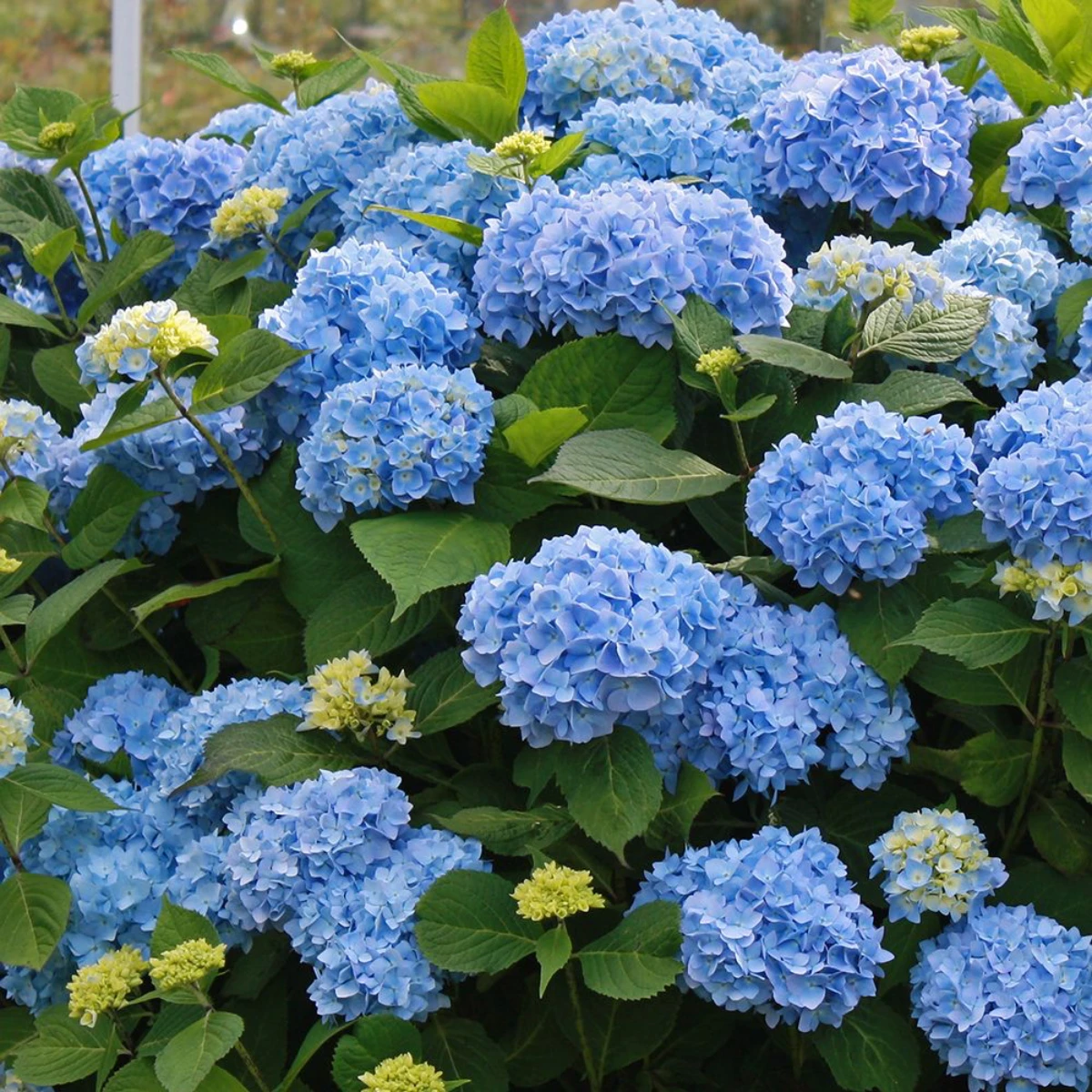
The 5 Hydrangeas You Need to Know
1. Bigleaf Hydrangea
This is the one you probably picture: big, round, classic flower heads. They are the definition of summer on the coast. But they can be a bit of a diva.
How to Make Them Happy: I constantly see these planted in scorching hot, all-day sun, and they just look miserable—wilted leaves every afternoon. The pros know to place them on the east or north side of a house, where they get gentle morning sun and are shielded from the brutal afternoon heat. They need soil that’s consistently moist but not soggy. A 2-3 inch layer of organic mulch (like shredded bark) is your best friend here. It keeps the soil cool and moist.
You’ll see two main flower shapes:
- Mopheads: The classic, giant snowballs of dense flowers.
- Lacecaps: These look more delicate and natural, with a flat center of tiny fertile buds surrounded by a ring of larger, showy petals. I love using these in more relaxed, woodland-style gardens.
Pruning and Winter Care: As an old wood bloomer, this one is tough in colder zones (USDA Zone 5 is a gamble). To get around this, you can either buy newer reblooming types that cleverly produce flowers on both old and new growth, or you can give them some winter protection. That chicken wire trick you hear about? It’s gold.
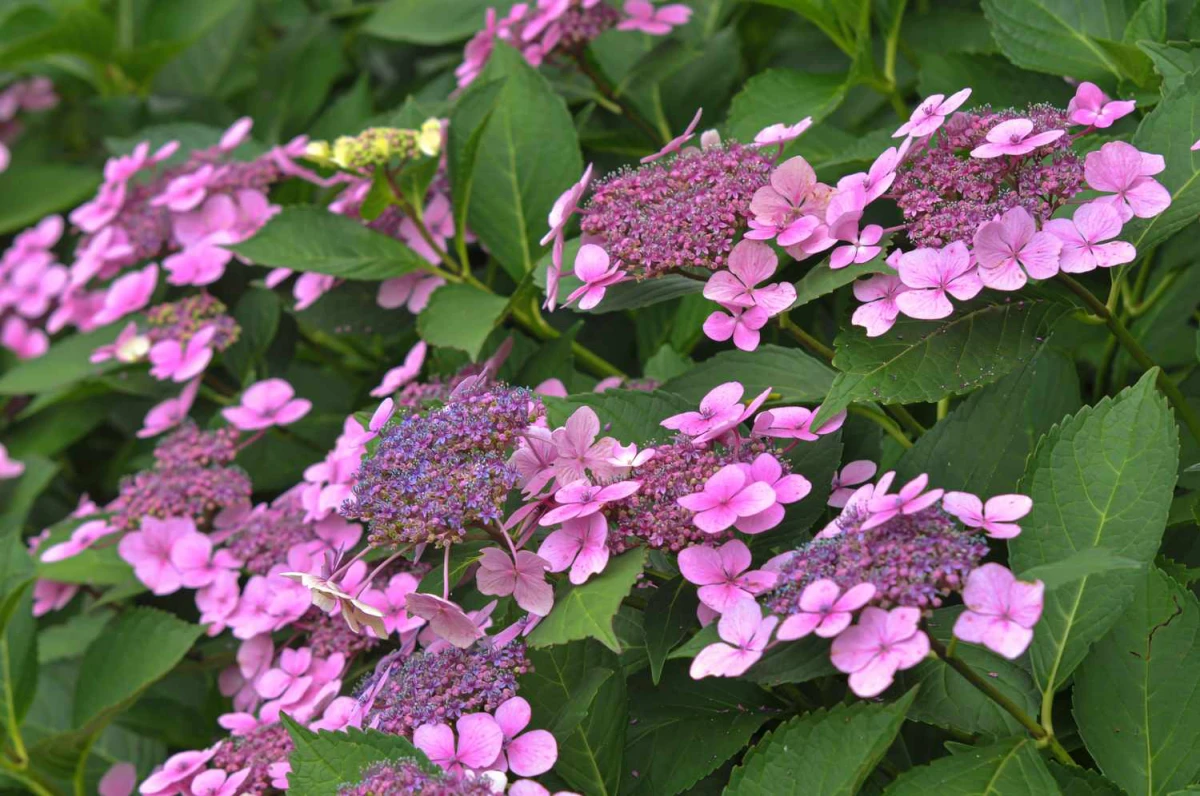
Winter Protection in 3 Steps:
- When to Do It: In late fall, after a few light frosts but before the ground freezes solid.
- How to Build It: Create a cylinder of chicken wire or burlap around the plant, about 6 inches wider than the branches. Fill it loosely with shredded leaves (oak leaves are fantastic because they don’t compact).
- When to Unpack: In the spring, once the threat of a hard frost has passed, gently remove the leaves and the cage.
A good 3-gallon plant at a local nursery will likely run you between $30 and $60, depending on the variety.
2. Smooth Hydrangea
This is a North American native and a total workhorse. Think of those gigantic, perfectly round white flower heads. The most famous one is ‘Annabelle’, but we’ve got better options now.
How to Make Them Happy: The biggest complaint with the older varieties was “the flop.” The flower heads get so massive that a single rainstorm would bend the stems to the ground. For years, we used stakes and hoops. To be frank, it was a pain. But plant breeders fixed it! I now almost exclusively use newer varieties like ‘Incrediball’, which were developed to have ridiculously strong, thick stems. They hold those giant blooms up high, rain or shine. It’s a huge improvement.
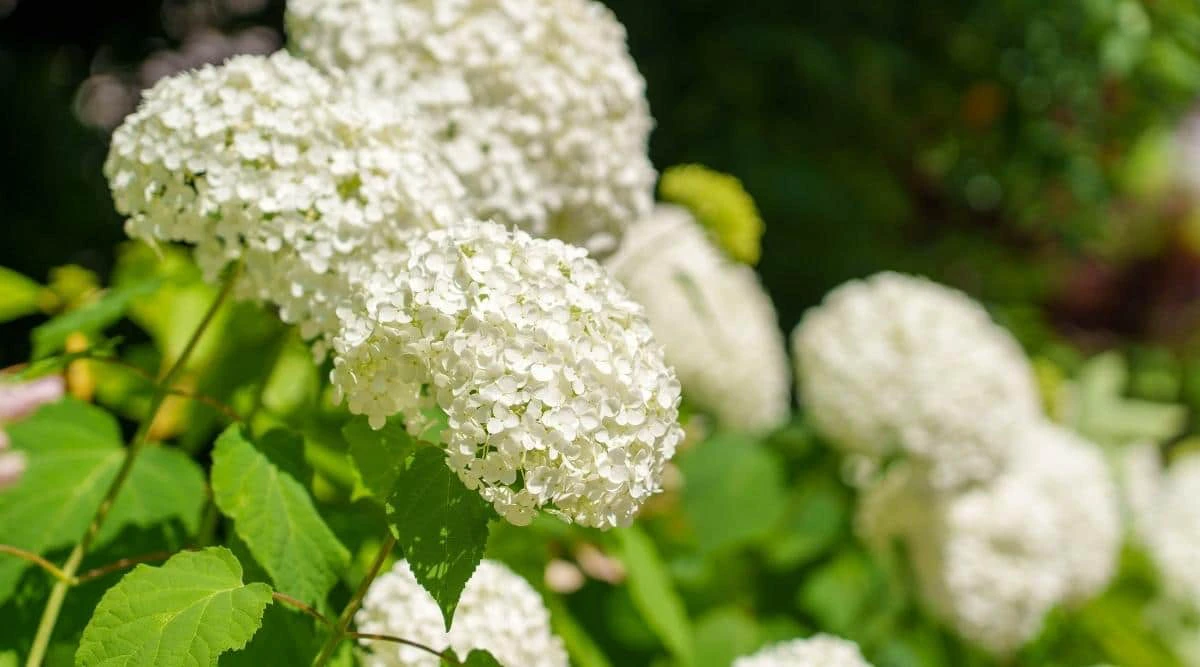
Pruning and Winter Care: This is the dream plant for cold climates (hardy down to Zone 3). Because it blooms on new wood, winter can do its worst, and it will still burst forth with tons of flowers that summer. Pruning is incredibly simple. In late winter or early spring, just cut the whole thing back to about 6-12 inches from the ground. This encourages strong new stems and the biggest flowers.
3. Panicle Hydrangea
Got a sunny spot where every other hydrangea has fizzled out? This is your answer. These are the most sun-tolerant and drought-tolerant of the bunch, known for their distinct cone-shaped flowers.
How to Make Them Happy: These are my go-to for adding structure to a garden. The flowers start out creamy white or lime green in mid-summer and then, as the nights get cooler, they blush into stunning shades of pink, red, and burgundy. That fall color show is a huge bonus. And size matters! For small gardens, a compact variety like ‘Bobo’ is perfect, staying a tidy 3 feet tall and wide. But if you have space, a ‘Limelight’ can easily reach 8 feet tall and act as a beautiful screen.
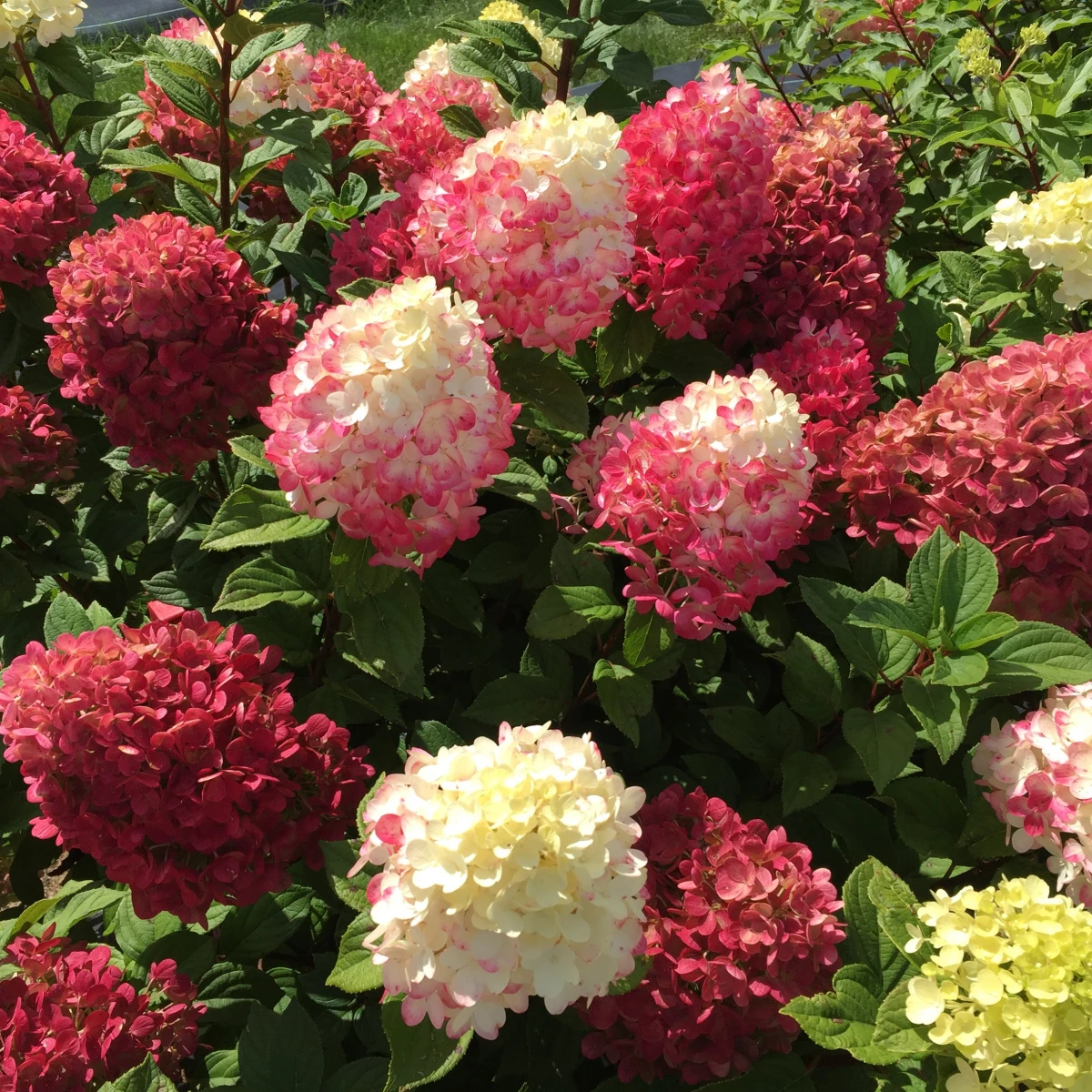
An advanced move I love for a formal look is to train one into a tree form. It takes a few years of careful pruning, but the result is a showstopper.
Pruning and Winter Care: Another super-reliable new wood bloomer that’s hardy to Zone 3. Just give it a haircut in early spring before it starts growing. I usually take off about one-third of the plant’s height to build a strong framework. It’s probably the easiest hydrangea for a beginner to grow successfully.
4. Oakleaf Hydrangea
Okay, I’ll say it: this is the best all-season shrub you can plant. It’s a native of the southeastern U.S. and offers something amazing in every single season.
- Spring & Summer: Huge, handsome leaves that look like they belong on an oak tree, followed by long cones of white flowers.
- Fall: The foliage is the star. It turns the most incredible shades of crimson, bronze, and deep purple. The fall color is often more reliable than a maple tree’s.
- Winter: After the leaves drop, you get to see the gorgeous, peeling cinnamon-colored bark. It adds so much texture to a bleak winter landscape.
How to Make It Happy: Think woodland edge—it loves some afternoon shade, which also helps its fall color be more vibrant. The one thing it absolutely cannot stand is wet feet. I’ve seen more of these fail from root rot in heavy clay soil than anything else. Good drainage is non-negotiable.
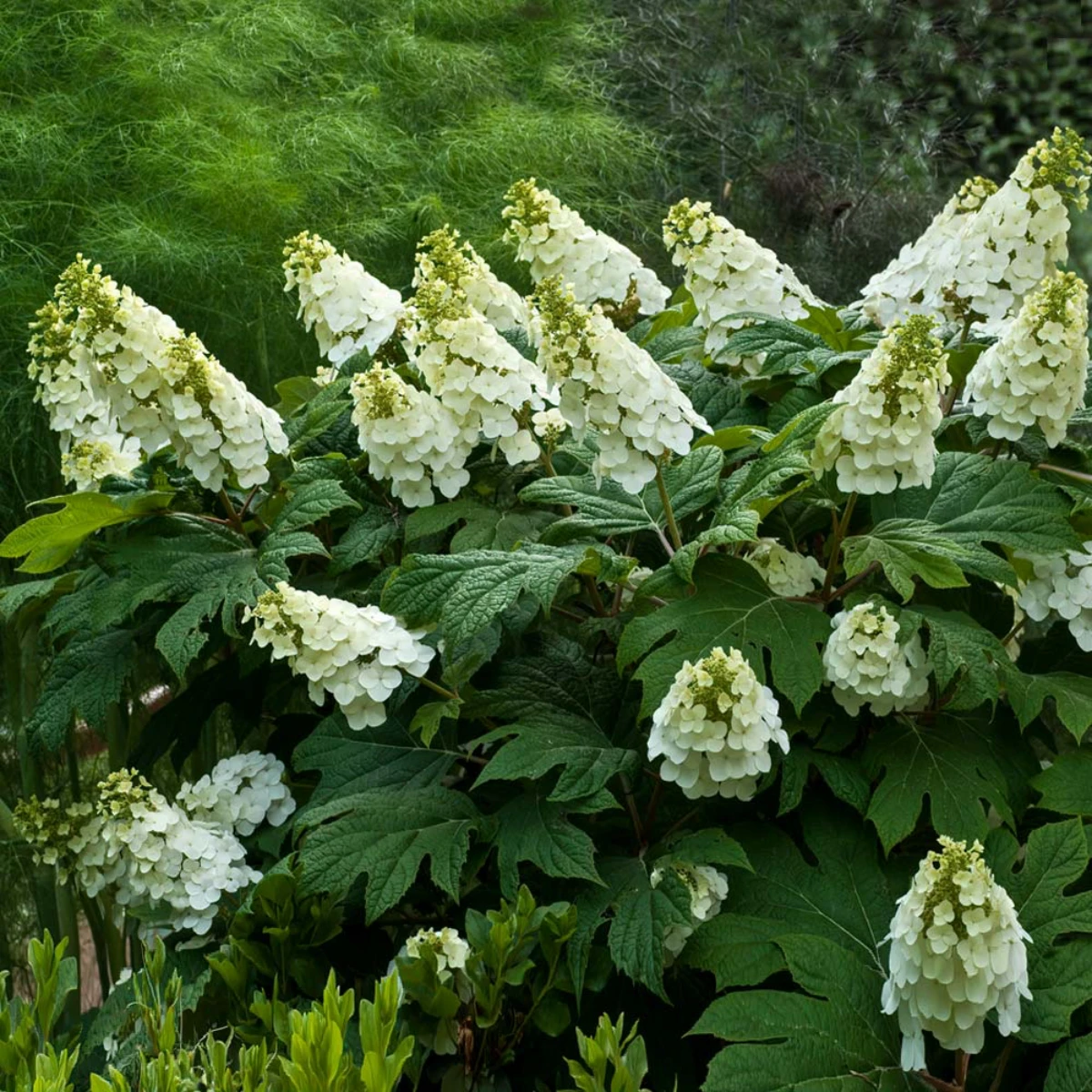
Pruning and Winter Care: It blooms on old wood but is generally tougher than the Bigleaf, flowering reliably into Zone 5. It needs almost no pruning. Seriously. Just trim out any dead wood when you see it. Its natural, arching shape is part of its beauty, so don’t try to force it into a meatball shape.
5. Climbing Hydrangea
This is a specialist. If you need to cover a large, shady wall, this is your plant. It’s a true, woody vine that clings to surfaces with little aerial rootlets.
How to Make It Happy: Patience is key. I always tell my clients the old saying: “First year it sleeps, second year it creeps, third year it leaps.” It spends the first couple of years building a massive root system, so you won’t see much action up top. But then… watch out. It can easily climb 50 feet or more. It has beautiful, fragrant white lacecap flowers and interesting peeling bark in winter.
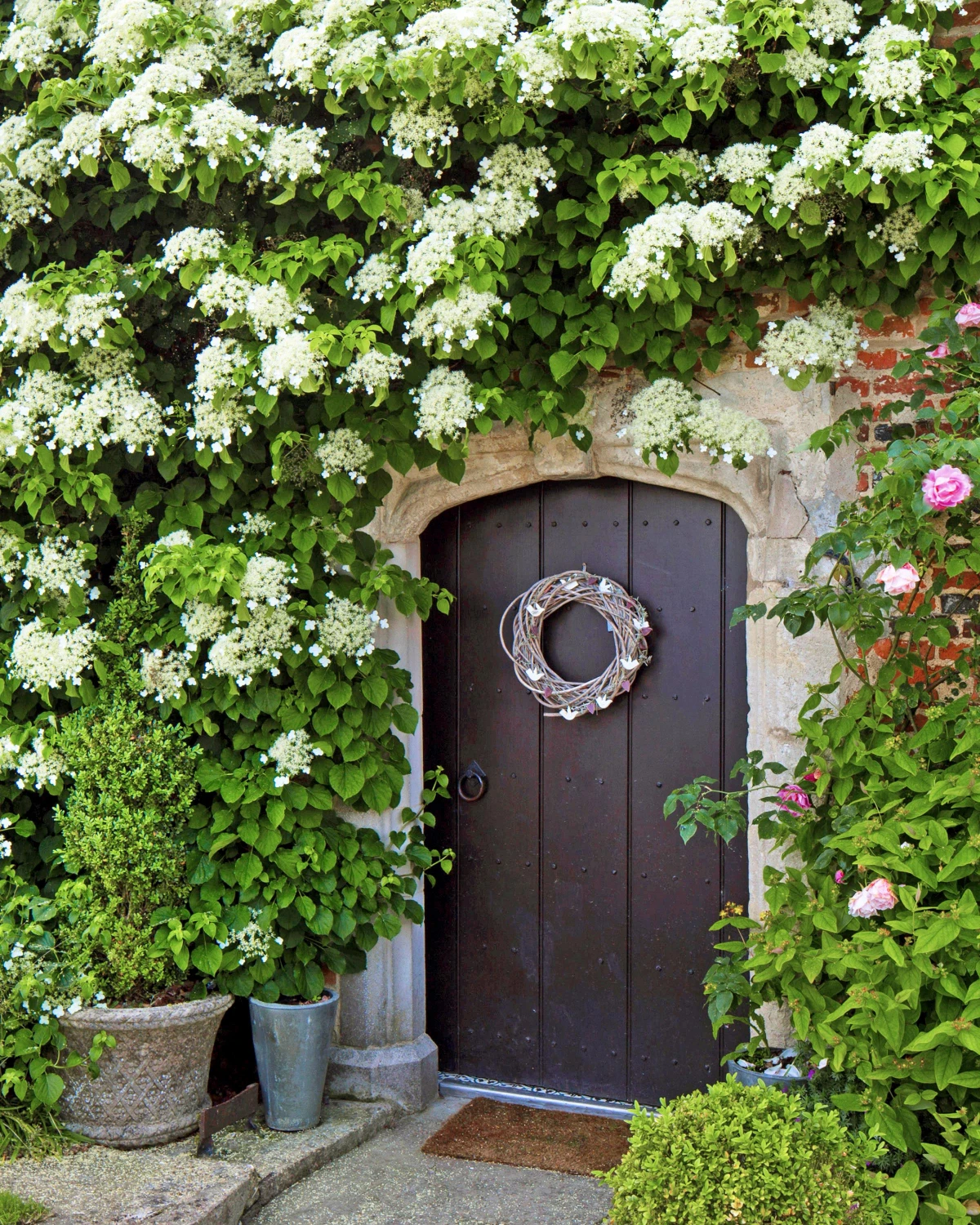
A Very Important Warning: This vine is HEAVY. It needs a strong surface like a brick wall, a stone chimney, or a very sturdy trellis. Trust me on this one: DO NOT plant it on a wood-sided house or fence. Those little roots will work their way into the wood, trap moisture, and cause rot. Removing a mature one is a nightmare that can lead to expensive repairs.
Pruning and Winter Care: Hardy to Zone 4 and blooming on old wood, it needs very little pruning—just a trim here and there in summer to keep it out of windows and gutters.
Quick Troubleshooting for Common Headaches
Even with the right plant, things happen. Here’s what to check.
Problem: My hydrangea has no flowers!
- What kind is it? First, figure out if it blooms on old or new wood.
- When did you prune? If it’s an old wood bloomer and you pruned it in spring, you cut off the flower buds. Oops.
- Check the weather history. Did you have a late, hard frost? For old wood bloomers, that can be a season-killer.
- How much sun? Most need at least four hours of sun. A Panicle hydrangea in deep shade won’t bloom well.
- What are you feeding it? Is it near a lawn that gets high-nitrogen fertilizer? That kind of plant food (with numbers like 29-0-4) tells the plant to grow leaves, not flowers. Look for a balanced, all-purpose plant food or a bloom-booster (with numbers more like 10-30-20).
Problem: The leaves have ugly brown or purple spots.
This is almost always Cercospora leaf spot, a fungal thing that’s mostly a cosmetic issue. It thrives in hot, humid weather. To prevent it, water the soil at the base of the plant, not the leaves. Make sure your plants have room to breathe (good air circulation is key). Cleaning up fallen leaves in the fall also helps, as the fungus can hide out there over winter.
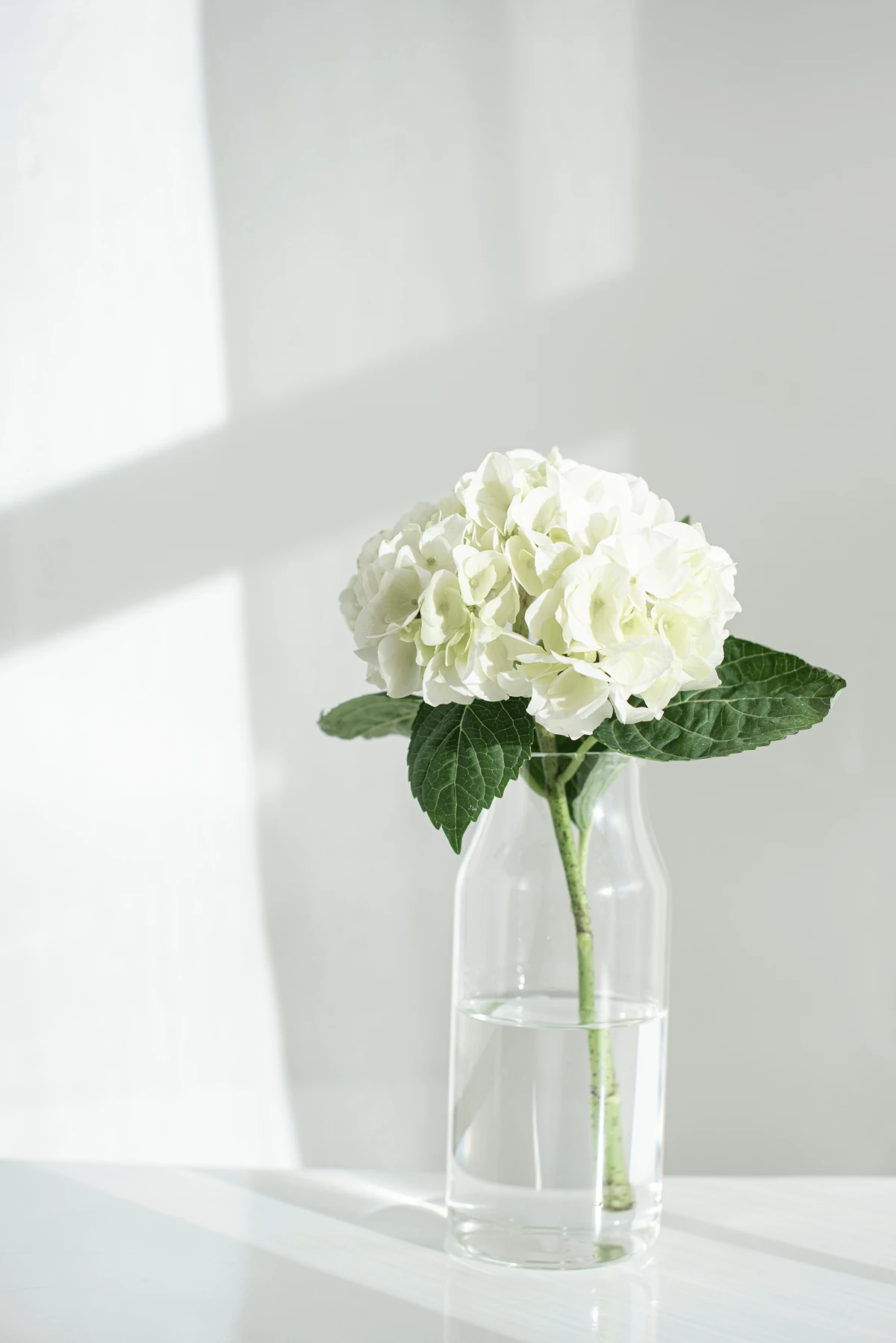
My Final Piece of Advice
When you’re at the nursery, it’s so easy to get seduced by the plant that’s bursting with the most blooms. But I want you to look past that. Read the tag. What’s its mature size? Its sun preference? Gently check the roots—they should be light-colored and fill the pot, not be a dense, circling mess.
If you do nothing else after reading this, go out and give your hydrangea a 2-inch blanket of mulch around its base. It’s a quick win that instantly helps hold in moisture and keeps the roots cool.
By understanding these different personalities, you can make a choice that leads to decades of beauty instead of years of questions. And that’s the best feeling in the world.
Friendly Reminder: All parts of the hydrangea plant can be toxic to pets and people if they eat them. Always use clean, sharp pruning tools to keep your plants healthy. And by the way, if you don’t know your hardiness zone, you can find it in about 10 seconds by typing your zip code into the USDA Plant Hardiness Zone Map online. For really big jobs, a certified pro is always a good call.
Inspirational Gallery
Can I really turn my pink hydrangeas blue?
Yes, but only with certain types, primarily the Bigleaf (H. macrophylla) and Mountain (H. serrata) hydrangeas. The magic lies in the soil’s pH and the availability of aluminum. For vibrant blue flowers, you need acidic soil (pH below 6.0) which allows the plant to absorb aluminum. You can amend your soil with products like Espoma’s Soil Acidifier. For rich pinks or reds, the soil must be alkaline (pH above 7.0), which you can encourage by adding garden lime. Just remember, white hydrangeas will always stay white, regardless of your soil chemistry!
- They won’t shatter when touched.
- Their colors will be rich and muted, not faded brown.
- They will last for years in indoor arrangements.
The secret to perfectly dried hydrangeas? Don’t hang them upside down! Instead, cut the blooms in late summer when the petals feel a bit papery. Place the stems in a vase with just a couple of inches of water and simply let the water evaporate. The flowers will dry slowly and beautifully, preserving their shape and color.
One major pitfall: Planting in deep, dark shade. While hydrangeas certainly appreciate shelter from the scorching afternoon sun, they are not true shade plants. To set abundant flower buds, most varieties, especially Panicle hydrangeas, need at least four to six hours of sunlight, ideally gentle morning sun. Without it, you’ll get a lovely green shrub with very few blooms to show for it.
The introduction of the Endless Summer® ‘The Original’ in 2004 revolutionized hydrangea growing for many gardeners.
Prior to its release, many people in colder climates struggled to get blooms from their Bigleaf hydrangeas because the flower buds, formed on old wood, were killed by winter cold. As the first widely available
Thinking about a classic white hydrangea? The two most popular choices have distinct personalities.
‘Annabelle’: A beloved classic with enormous, perfectly round white flower heads. Its downside is that its stems can be weak, often flopping over under the weight of the blooms, especially after rain.
‘Incrediball®’: This improved variety from Proven Winners was bred to solve that exact problem. It features the same massive white blooms but on incredibly sturdy, thick stems that hold the flowers proudly upright all season long.
Don’t be in a rush to deadhead everything in the autumn. Leaving the dried, papery flower heads on hardier types like Oakleaf (H. quercifolia) and Panicle (H. paniculata) adds wonderful structure and interest to the winter garden. Their forms look stunning dusted with frost or snow, and they provide shelter for beneficial insects over the cold months.
Did you know? The name Hydrangea comes from the Greek words
A newly planted hydrangea is a thirsty one, and proper watering during its first season is more critical than any fertilizer. The key is to water deeply, but not too frequently.
- Provide a long, slow soak at the base of the plant 2-3 times per week.
- This is far better than a light, daily sprinkle from above.
- Allow the soil to dry out slightly between waterings.
This method encourages the roots to grow deep down into the soil, establishing a resilient plant that can better withstand future droughts.
Limited on space? You can still enjoy the grand beauty of hydrangeas. Plant breeders have introduced fantastic dwarf varieties that thrive in containers or small garden beds. Look for ‘Bobo®’, a panicle hydrangea that reaches only three feet tall but gets smothered in blooms, or ‘Little Lime®’, a smaller version of the famous ‘Limelight’ that’s perfect for a patio pot.
- Lush, broad-leafed Hostas
- Delicate, feathery Astilbes
- Elegant ferns like the Japanese Painted Fern
- Flowing Hakonechloa (Japanese Forest Grass)
The key to a breathtaking garden design with hydrangeas is companion planting. These plants not only complement the hydrangea’s bold blooms with contrasting textures and forms, but they also thrive in the same moist, part-shade conditions.










